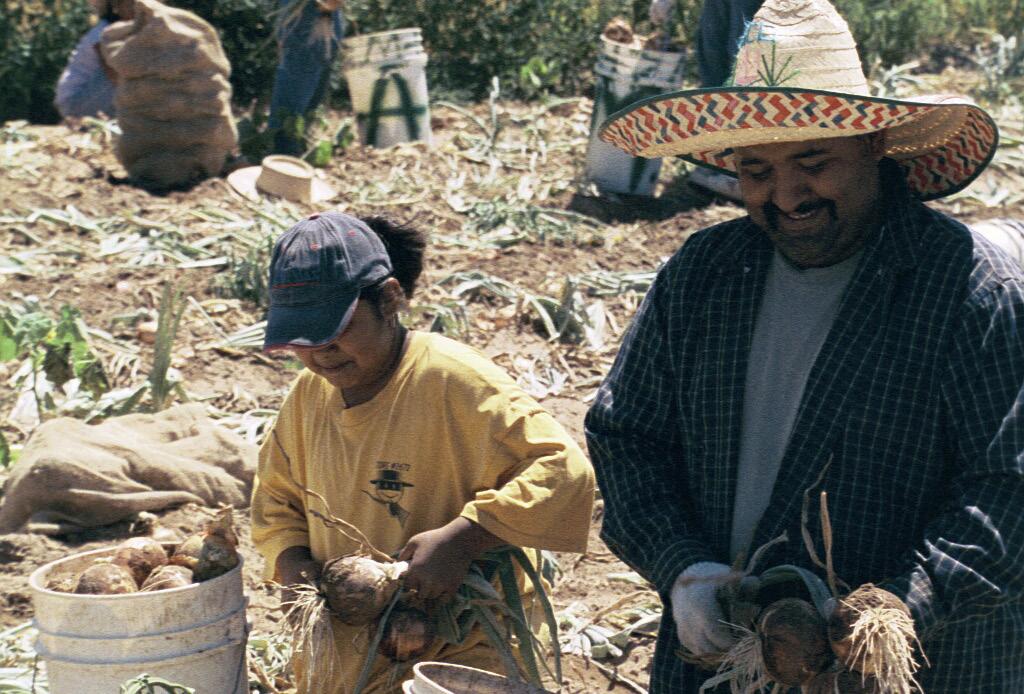
4 minute read
Current Federal Child Labor Laws Underprotect Child Farmworkers
emerged again to do the grueling agricultural labor, whose children were not protected from working in the fields.
This dynamic continues today. Over 90% of farmworkers in the United States are persons of color—roughly 83% of farmworkers are Hispanic, 7% are Haitian, 6% are Indigenous, and 3% are African American.14 There is no reliable data on the ethnicity of child farmworkers. The Department of Labor’s statistics explicitly exclude children under 16 in the Bureau of Labor Statistics, and under 14 in the National Agricultural Workers Survey.15 The FLSA remains the primary federal law governing the employment of children, and the same exemptions exist that allow the continued exploitation of children, mostly children of color, as an underclass of society on farms across America. Conditions in states vary, depending on the strength and enforcement of state laws, but the same incentives exist for employers to hire children, and they will continue to do so until the law changes and prohibits them from doing so.
14 U.S. Department of Labor, “Findings from the National Agricultural Workers Survey (NAWS) 2015-2016, A Demographic and Employment Profile of United States Farmworkers,” (January 2018), https://wdr.doleta.gov/research/ FullText_Documents/ETAOP_2019-01_NAWS_Research_Report_13.pdf. Statistics likely overlap some because 24% of farmworkers self-identified as white, although the survey did not distinguish between Hispanic and non-Hispanic whites. The “Black or African American” number is likely a significant undercount given 24% of Latinos in the United States are Afro-Latino. See Gustavo Lopez & Ana Gonzalez-Barrera, “Afro-Latino: A deeply rooted identity among U.S. Hispanics,” Pew Research Center, March 1, 2016, https://www.pewresearch.org/fact-tank/2016/03/01/afro-latino-a-deeply-rooted-identity-among-u-s-hispanics/. Additionally researchers with the Association of Farmworker Opportunity Programs estimate that 7% of farmworkers in the United States are Haitian. See Association of Farmworker Opportunity Programs, “Haitians in U.S. Agriculture,” (February 2017), https://afophs. wordpress.com/2017/02/23/haitians-in-u-s-agriculture/. 15 Zama Coursen-Neff, “Fields of Peril, Child Labor in US Agriculture”, Human Rights Watch, May 5, 2010, https://www.hrw.org/report/2010/05/05/fields-peril/child-labor-us-agriculture#_ftnref366
The standard minimum age for nonagricultural employment is 16, and under the FLSA, youth under age 18 may not work in any occupation “particularly hazardous for the employment of children...or detrimental to their health or well-being.” Yet exemptions for agriculture allow children to work at age 12 and to perform hazardous work at age 16. The Secretary of Labor may permit employing children aged 14-16 in work that is not “oppressive,” that does not interfere with schooling, and is not detrimental to their health,16 but further agricultural exemptions with parental consent allow children to start working at younger ages in more hazardous environments. The Secretary of Labor may also issue Hazardous Occupation Orders, deeming certain work activities too dangerous for youth below a certain age. However, attempts to update these hazardous regulations failed during the Obama administration, ignoring recommendations from the National Institute for Occupational Safety, and leaving thousands of farmworker children vulnerable to performing farm tasks that are dangerous.
Agricultural work, of course, looked very different when the FLSA was enacted, but subsequent amendments did not keep pace with agricultural advancements. While modern machinery and the use of agrochemicals increased production on American farms, they also heightened the risks that farmworkers and farmworker children face.
Regulators discovered early on that it was difficult to enforce and verify compliance within industrial housework, and that often remains the case for agricultural workers,
16 The Fair Labor Standards Act of 1938, 29 U.S.C. § 203
Federal Child Labor Protections for Agricultural and Nonagricultural Employment, Compared
Non-Agricultural Employment Agricultural Employment
Minimum age for hazardous work at any time 18 years or older 16 years or older
Hours per school day 14- and 15-year olds are limited to working 3 hours on a school day and 8 hours on a non-school day (with certain other restrictions) 14- and 15-year olds may do non-hazardous work anytime outside of school hours without hour limits
If they have parental consent, 12- and 13- year olds may do non-hazardous work anytime outside of school hours without hour limits Youth under age 12 may do non-hazardous work anytime outside of school hours on family farms exempt from minimum wage requirements with parental consent
Minimum Age for Work 14 (with certain exemptions) No minimum age for working on a family-owned or operated farm, or farms that are exempt from federal minimum wage provisions
Gerald Mayer, “Child Labor in America: History, Policy, and Legislative Issues,” U.S. Congressional Research Service, RL31501, November 18, 2013, https://sgp.fas.org/crs/misc/ RL31501.pdf 10 Child Farmworkers
especially impoverished child migrant workers. State by state enforcement varies. Recent budget cuts to OSHA led to decadeshigh levels of workplace fatalities, decadeslow workplace inspection rates,17 and overall reduction in compliance and safety officers.18
For several years, U.S. Congresswoman Lucille Roybal-Allard has introduced and led efforts to pass The Children’s Act for Responsible Employment and Farm Safety [The CARE Act], which would close agricultural loopholes in the FLSA and increase protections for child farmworkers. This bill would raise the minimum age for agricultural child work, limit their working hours, and increase penalties for employers who violate the law. In the absence of federal action, our research shows that states have a vital role to play to protect child farmworkers.
17 Ted Knutson, “Worker Dangers Up As Trump OSHA Cuts Come Home to Roost, Say AFL-CIO Exec, Ex-DOL Official,” Forbes, August 1, 2020, https://www.forbes.com/sites/ tedknutson/2020/04/01/worker-dangers-up-as-trump-osha-cuts-come-home-to-roost-say-afl-cio-exec-ex-dol-official/?sh=53014ccc8bf5 18 National Safety Council, “House passes budget bills that include OSHA, MSHA and NIOSH funding,” Safety+Health Magazine, August 6, 2021, https://www.safetyandhealthmagazine.com/articles/21553-house-passes-budget-bills-that-include-osha-msha-and-niosh-funding









